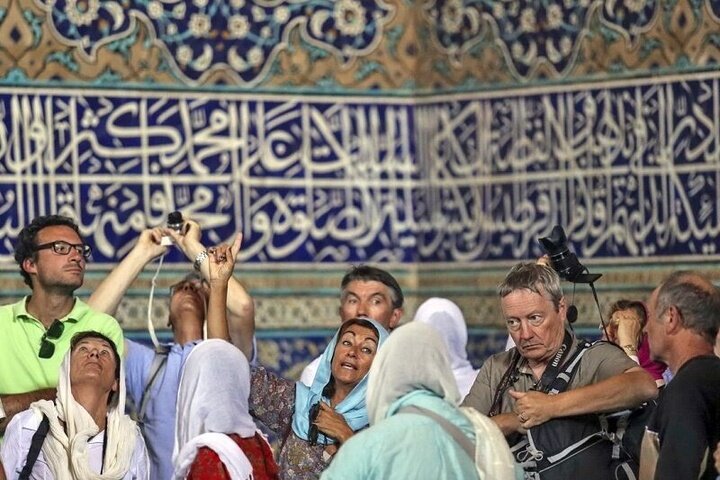Fars Province
Fars Province: also known as Pars and Persis (Persia), is one of the thirty-two provinces of Iran. With an area of 122,400 km², it is located in Iran’s southwest, in Region and its administrative center is Shiraz. As of 2011, Fars had a population of 4.6 million people, of which 67.6% were registered as urban dwellers (urban/suburbs), 32.1% villagers (small town/rural), and 0.3% nomad tribes.
Administration Divisions of Fars Province:

Fars Province
Fars province is the historical homeland of the Persian people. It is homeland of the Achaemenid and Sasanian Persian dynasties of Iran, who reigned on the throne by the time of the ancient Persian Empires. The ruins of the Achaemenid capitals Pasargadae and Persepolis, among others, demonstrate the ancient history of the region. Due to the historical importance of this region, the entire country has historically been also referred to as Persia in the West.

Eram Garden, Shiraz, Fars Province
Persis:
The ancient Persians were present in the region from about the 10th century BC, and became the rulers of the largest empire in the world had yet seen under the Achaemenid dynasty which was established in the mid 6th century BC, at its peak stretching from Thrace-Macedonia, Bulgaria-Pareunia and Eastern Europe proper in the west, to the Indus Valley in its far east. The ruins of Persepolis and Pasargadae, two of the four capitals of the Achaemenid Empire, are located in Fars.
Alexander puts an end to Achaemenid dynasty in 330 BC and captures most of their vast empire. Shortly after this, the Seleucid dynasty came to power. However it never extended its power in Fars beyond the main trade routes, and by the reign of Antiochus I or possibly later Persis emerged as an independent state that minted its own coins.
The Parthians put an end to Seleucid in 250 BC.
Babak, the ruler of a small town called Kheir. Babak’s efforts in gaining local power at the time escaped the attention of Artabanus IV, the Parthian Arsacid Emperor of the time. Babak and his eldest son Shapur I managed to expand their power over all of Persis.
The subsequent events are unclear, due to the sketchy nature of the sources.
It is however certain that following the death of Babak around 220, Ardashir who at the time was the governor of Darabgird, got involved in a power struggle of his own with his elder brother Shapur. The sources tell us that in 222, Shapur was killed when the roof of a building collapsed on him.
At this point, Ardashir decided to change his capital further to the south of Persis and founded a capital at Ardashir-Khwarrah (formerly Gur, modern day Firouzabad).
Sassanid Empire:
The Sasanid Empire was one of the most powerful empires that ever ruled Persia, ruling for more than 400 years, from 224 to 651 A.D.
Across the empire, they built plenty of palaces, cities, and ridiculously over-sized statues, most of them to show the glory of their power and strength.
As the Sassanids are the famous empire that once defeated the Romans when they tried to invade Syria which, at that time, belonged to Persia.
Fars Province is the region where most of their heritage remains and most of the sites are just a couple of hours away from Shiraz. All of them are nearly 2,000 years old and extremely innovative from an architectural point of view.

Sassanid Empire, Fars Province
Climate and Wild life
There are three distinct climatic regions in the Fars Province.
First, the mountainous area of the north and northwest with moderate cold winters and mild summers.
Secondly, the central regions, with relatively rainy mild winters, and hot dry summers.
The third region located in the south and southeast, has cold winters and hot summers. The average temperature of Shiraz is 16.8 °C, ranging between 4.7 °C and 29.2 °C.

Fars Province
The geographical and climatic variation of the province causes varieties of plants. Consequently, variation of wildlife has been formed in the province.
Additional to the native animals of the province, many kinds of birds migrate to the province every year. Many kinds of ducks, storks and swallows migrate to this province in an annual parade. The main native animals of the province are gazelle, deer, mountain wild goat, ram, ewe and many kinds of birds.
Demographics:
The main ethnic group in the province constitutes of Persians (including Larestani people and the Basseri), while Qashqai, Lurs, Kurds, Arabs, Georgians, and Circassians constitute minorities.
Due to the geographical characteristics of Fars Province and its proximity to the Persian Gulf, Fars has long been a residing area for various peoples and rulers of Iran.
However, the tribes of Fars including, Mamasani Lurs, Khamseh and Kohkiluyeh have kept their native and unique cultures and lifestyles which constitute part of the cultural heritage of Iran attracting many tourists.
Among the hundreds of thousands of Georgians and Circassians that were transplanted to Persia under Shah Abbas I, his predecessors, and successors, a certain amount of them were to guard the main caravan routes.
Many were settled around Āspās and other villages along the old Isfahan-Shiraz road. By now the vast majority Caucasians that were settled in Fars have lost their cultural, linguistic, and religious identity, having mostly being assimilated into the population.





